The Independent Community of Lamb’s Conduit Street
By Something Curated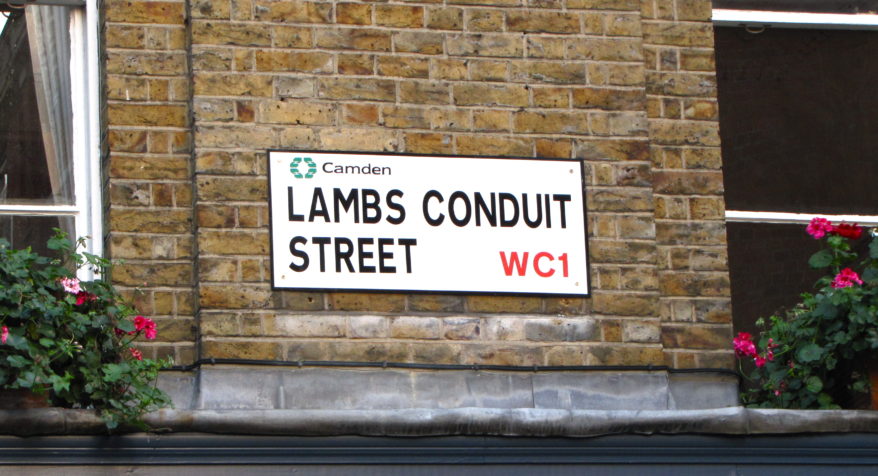
Tucked away in London’s historic Bloomsbury is Lambs Conduit Street, a cobblestone lane that melts into wide, open sidewalks, filled with glittering string lights, colourful independent shop fronts and plein air cafes. Though strung between the highways of Theobald Road and Guilford Street, Lambs Conduit has established itself as a destination point for fashion-forward menswear and lifestyle supplies. Similar to Olford Street in Walthamstow, or Exmouth Market triangulated between KingsX, Clerkenwell and Angel, Lambs Conduit feels tucked away from the rest of world.
At nighttime, when the lights scattered around the branches of its many leafy trees become the spotlight for the street below, Lambs Conduit borders on the edge of magical. A generic English pub (The Lamb) on the corner is the only indication of place – otherwise, one could easily mistake the street for one of Nørrebro’s many side-alleys or a Parisian lane. Here we take a quick peek at some of the new and older establishments that make up the unique community feel of Lambs Conduit, and speculate upon the origins of the exciting and eclectic atmosphere it is able to channel whilst situated in central London.
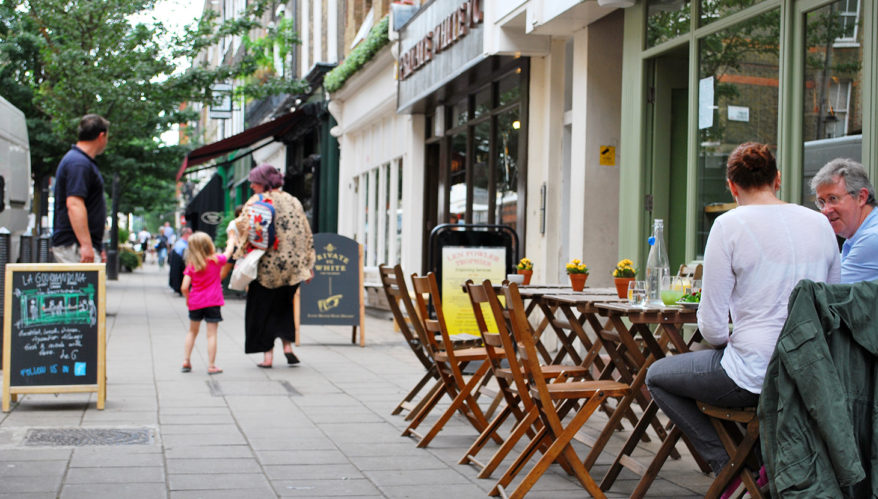
Aesop
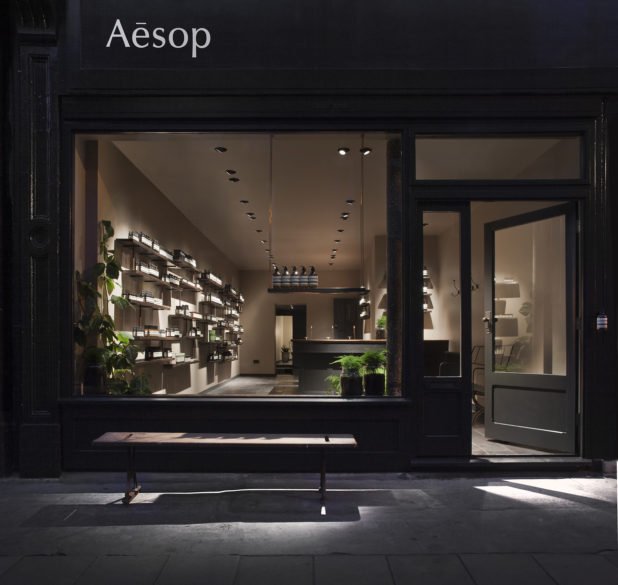
Having opened its 12th UK store in Lambs Conduit just over a year ago, Aesop is one of the freshest faces on the block. The airy interiors burst with tropical greenery and glittering copper taps, complemented by uneven Staffordshire quarry tiles and oxidised copper shelves. Aesop called upon the British designer power-couple James Russell and Hannah Plumb of local design studio JamesPlumb to re-imagine the 86-square-metre space on the historic street in London’s Bloomsbury.
The space is finely attuned to the history of the street, which was founded in 1577 by William Lamb to serve as a water conduit for the surrounding area. In their research, JamesPlumb found the description of local residents who would tap into the street’s supply as a ‘quill of water’ – which would become the conceptual foundation for Aesop’s layout.
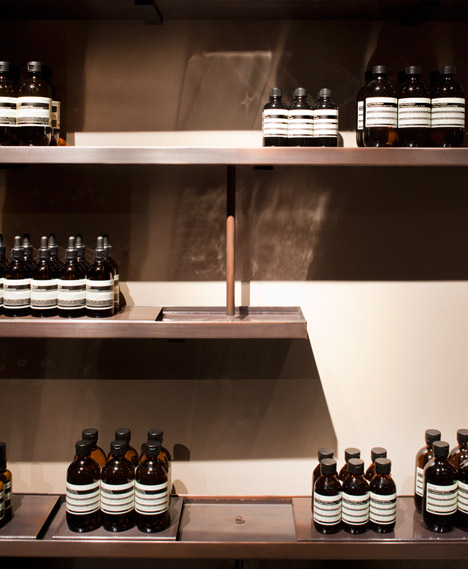
Lights by PSLAB are artfully positioned around the space in order to give a quivering appearance to the flowing water, which is enhanced by the babbling sound as it moves through the circulation system.
Darkroom
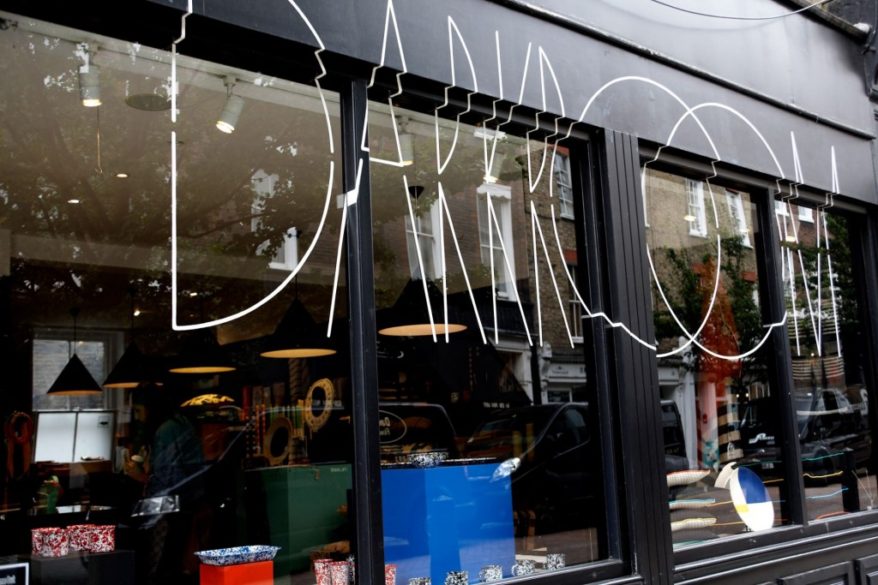
Neighbors with Aesop, Darkroom (est. 2009) was founded by Rhonda Drakeford and Lulu Roper-Caldbeck as a contrast-inspired lifestyle store that vends mens, womens, and home accessories. They stock a range of international designers and also produce their own collections, often drawing reference from re-emerging movements in art (such as De Stijl), architecture and design. It should be noted that Darkroom avoids patterns like the plague.
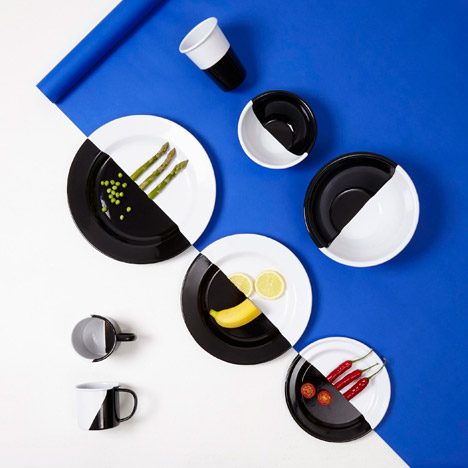
The experience of the shop is intended to be both surprising and familiar, to ‘provide a stimulating antidote to the generic and bland, whilst also recognising the basic human desire for beauty and comfort,’ in the words of its founders.
Persephone Books
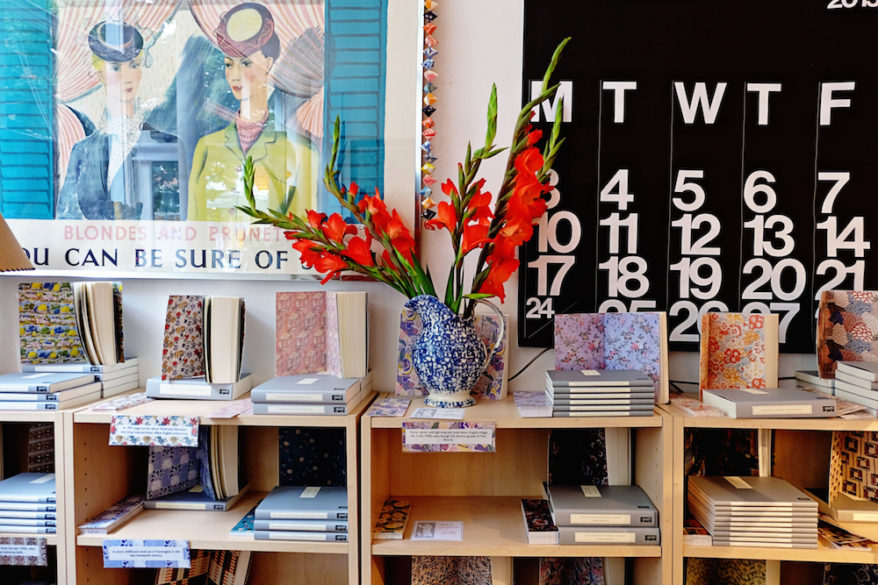
Persephone Books (est. 1998) is a one-of-a-kind publishing house that prints new and rediscovered fiction by female British authors, across fiction and non-fiction, including novels, poetry, memoirs, cookery books, social history and more. Londoner Nicola Beauman, its founder, is also a prolific writer – who has overseen the publication of more than 100 in the past 17 years, originally established Persephone to reprint women writers of the inter-war period portrayed in one of her own books, A Very Great Profession.
Each book is given a “Persephone” grey exterior (the same colour as the shop’s facade) with a unique bespoke print for the inside cover – and comes with a bookmark of the same print. In addition to the books in print (each is made in house in the basement press), Persephone runs a bookclub which meets every fortnight in the store (they’re making their way through the Persephone catalogue), and offers a subscription, in which the subscriber receives a book a month, plus tea and stationery that matches the print of the book.
Beauman’s extensive knowledge base extends beyond post-war women authors of Britain: her awareness of the street’s history and Persephone building is astounding. The shop’s interior design also harkens to British cultural and design history: filled with fresh flowers and china pottery, Persephone also vends night gowns, tea towels, and stationery that are printed with the same (usually) floral patterns as its texts.
The People’s Supermarket
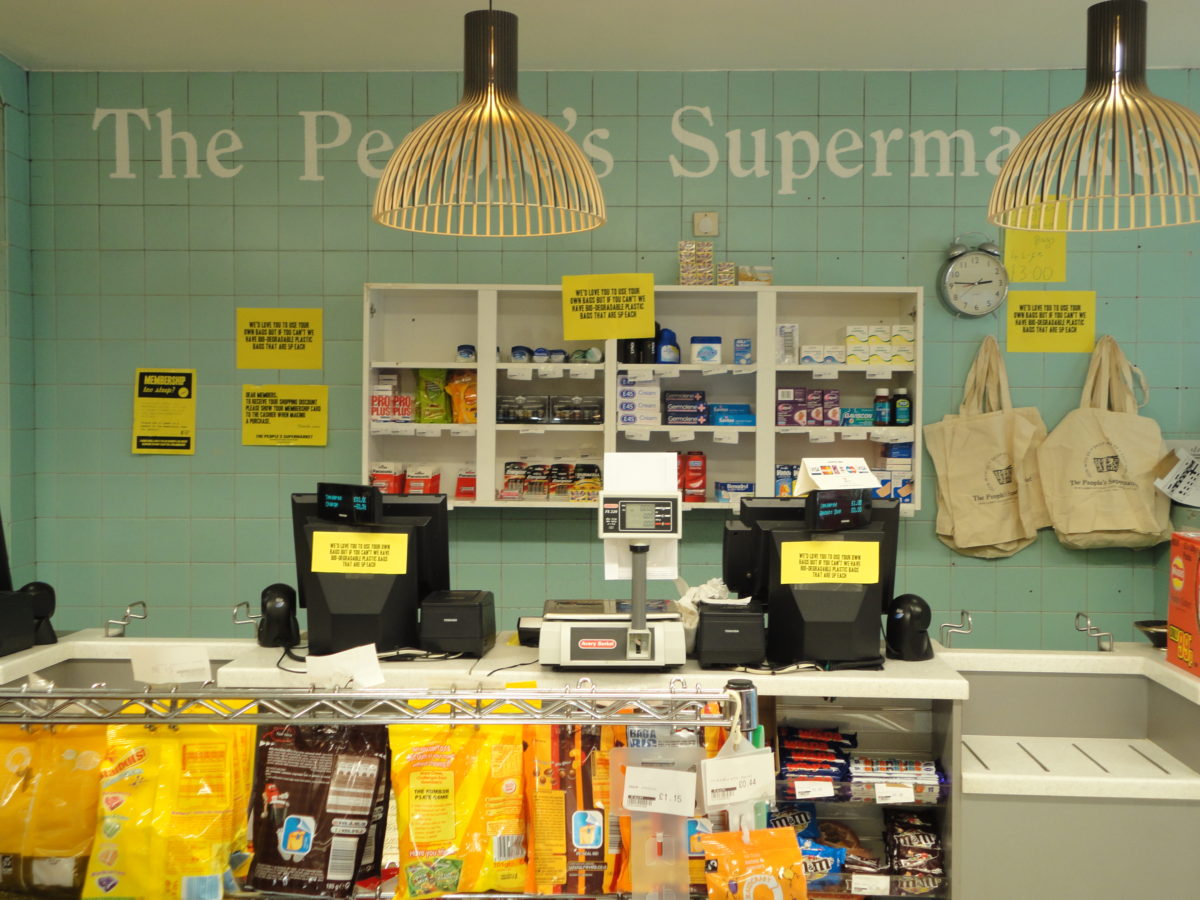
When it comes to community building, the People’s Supermarket (est.2010) founded by Arthur Potts Dawson – Lambs Conduit’s residential food co-op, is textbook definition. Potts Dawson is no stranger to food, having been a professional chef for twenty-three years. In 2006, he designed and created two sustainably-aware urban restaurants, Acorn House and Water House in London. After realizing his interest in producing communal spaces and organizations, Dawson opened People’s in collaboration with ex-Marks & Spencer executive Kate Wickes-Bull, as a not for profit, co-operative and social enterprise.
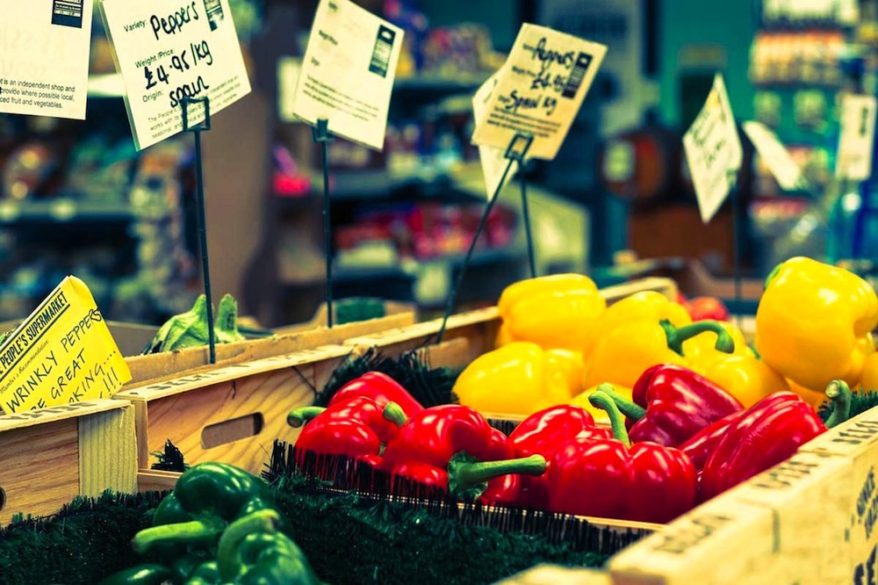
With a modest £25 annual fee and 4 hours volunteer work monthly, a membership at the People’s Supermarket gets you 20% off all stock (which is already cheaper than Tescos, Sainsburys et al.). People’s takes its format from the popular co-operative Park Slope in Brooklyn, NYC.
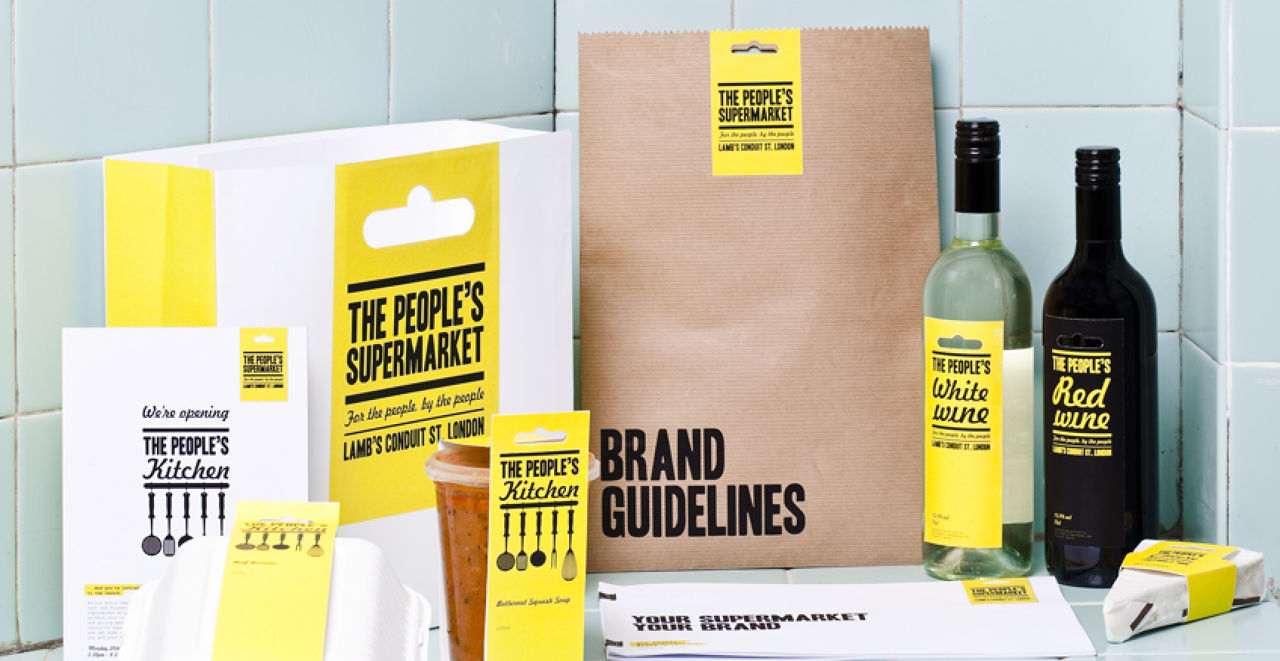
The duo used the design and branding firm Unreal to develop the co-op’s bold and minimalist identity. The assertive yet playful black and yellow brand cements People’s key principles of being communal, affordable and democratic without appearing too virtuous or elitist.
Folk
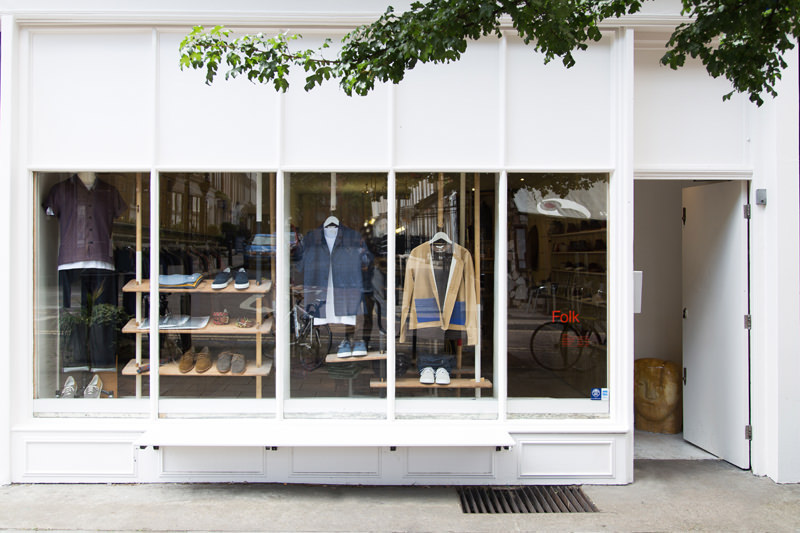
Folk (est. 2001) opened its doors as a menswear store on Lambs Conduit in 2007, previously selling exclusively in Japan. Its founder, Cathal McAteer, puts emphasis on minimalist-sleek clothing with a long lifeline: durable, classic but with a twist. They’re malleable: either being a wardrobe staple for the more off-beat dresser, or a statement piece for the more normcore guy, thanks to bold cuts and inventive detail work. They’re also fearless with colour, and obsessed with details. The brand’s minimalistic and relaxed-yet-refined identity has been loyally maintained by London-based IYA Studio for over 7 years, including its brand strategy and art direction, campaigns, retail interiors, packaging and website design, and more.
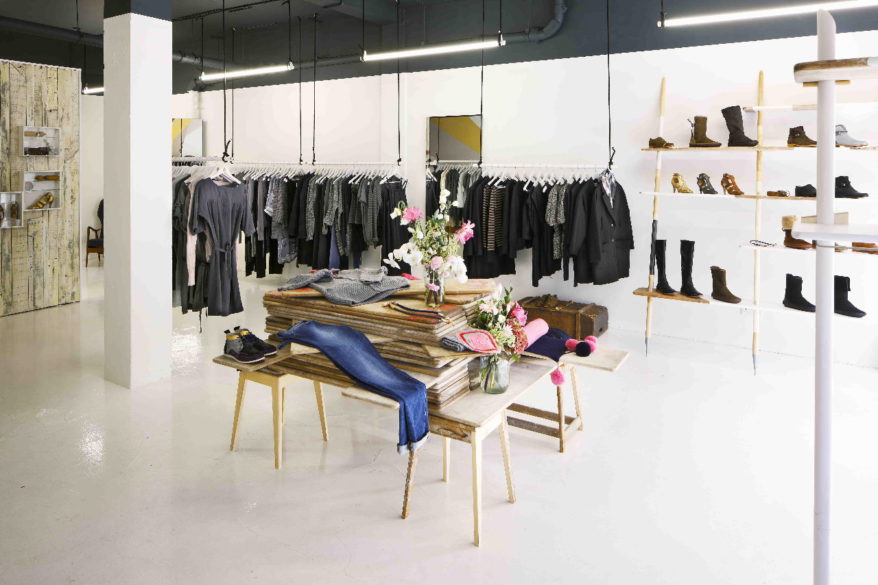
Folk womens, a dedicated women’s space next to their flagship store on Lambs Conduit opened up in August 2010, and it continues to be the only place in London where the womens collection is sold. It also allowed Folk to expand and display a much larger menswear collection. In addition to carrying their own brand, Folk stocks other brands with a like-minded aesthetic – we noticed a strong Scandinavian, French, and Japanese focus: think Acne, Sessún, and Tsumori Chisato (at folk womens). Many credit Folk’s early opening in 2007 as the catalyst for the fashion-forward nature of the street.
“The street suits our DNA. You say hello to everyone on it.” – Cathal McAteer, Founder, Folk Clothing
Oliver Spencer
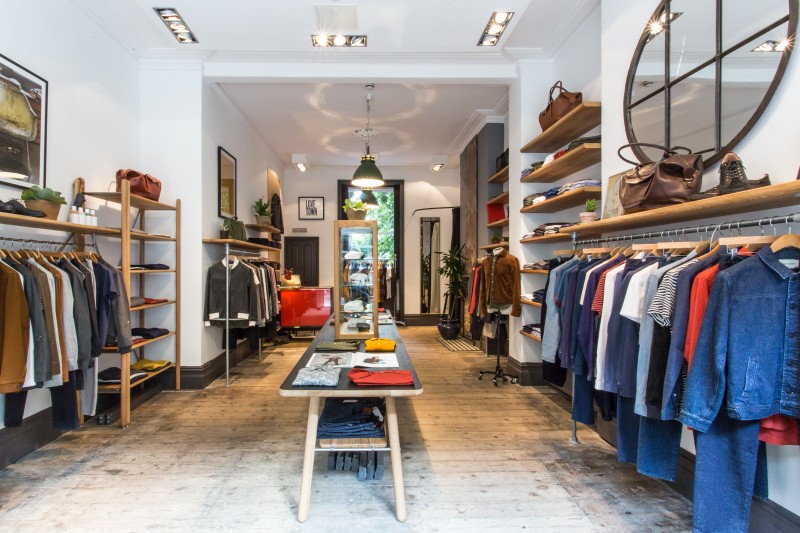
A chance conversation with Folk owner encouraged Spencer to open his shop in Lambs Conduit. Oliver Spencer describes itself as a “modern British brand” and makes more than half its collections here in the UK. Oli himself takes inspiration from Japan, hunting, the military and Americana to craft his clothes. Both the women’s and men’s lines are available on Lambs Conduit Street.
Just six months after opening their own store, McAteer of Folk persuaded designer Oliver Spencer to open up there, too. Spencer, who established his eponymous brand in 2002, focuses his brand on British aesthetic and production, with about half of his collections made in the UK. He’s become something of a stalwart defender of the identity of the street, and is known to argue with Lambs Conduit’s biggest landlord (Rugby Estate) regarding who is allowed on it (a Starbucks opening a few years back caused outrage amongst other decade-strong tenants.) Spencer, who recently opened a second store on Lambs Conduit – a speciality shoe store for men – speaks openly and passionately about the street, affirming its self-sufficient nature and just adding to the idea of Lambs Conduit as its own little universe.
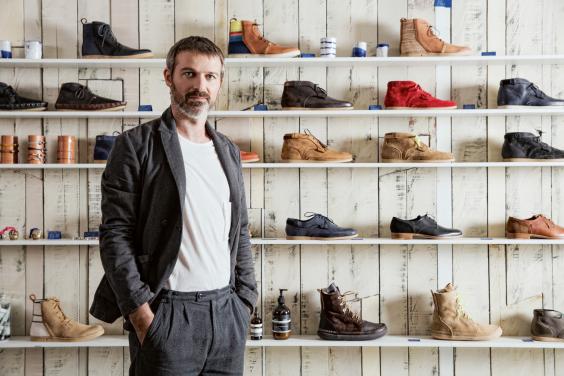
“All the fashion lot know and support each other. We get on. There is a real feeling of community. I live my life here. The office is here, I go to the butcher’s, buy my wine here. The street has one of the city’s oldest undertakers, so I could even be buried here. There really is no other street like it in London.” – Oliver Spencer
Grenson
Grenson, which has four outlets in London (Soho, two in Spitalfields, and Bloomsbury, naturally) and one in Manhattan, opened its doors on Lambs Conduit Street in late 2013. Following along with the Grenson established aesthetic, which has been in place for 150 years of its ‘Made in England’ practice, this store is light and earthy, suited out in a minimalist and mid-century modern feel while retaining an old-world charm. Using mostly neutral and earth tones to really make the occasional brightly-coloured shoe or accessory pop. It has a wide window that looks out onto the street, as its tile flooring wraps up across the display bench, creating a sense of unison throughout the store.
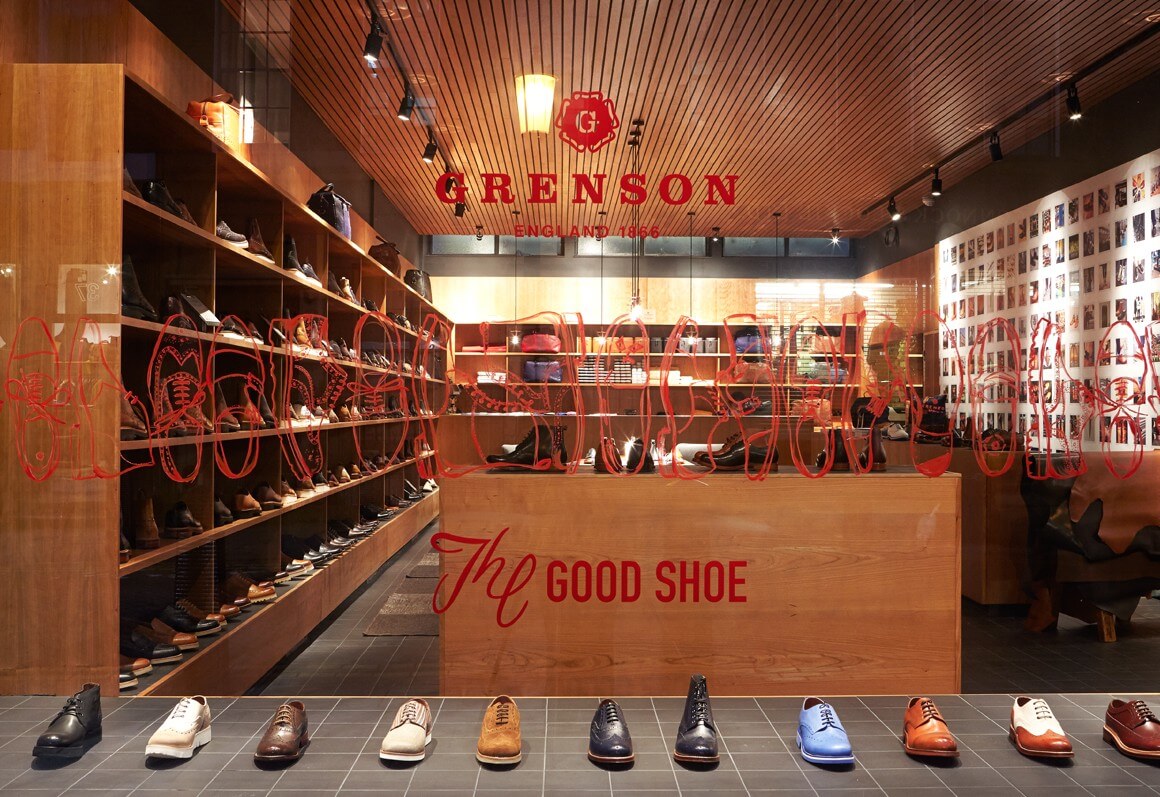
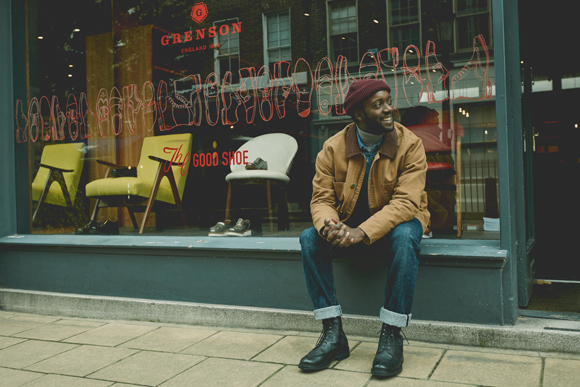
“We are delighted to be opening a shop on Lambs Conduit Street, we love the other brands on the street and feel that we compliment what they do. This is our biggest shop to date and it will give us the opportunity to do events, bespoke and many other things that we haven’t been able to do in our smaller shops,” – Tim Little, owner and creative director of Grenson. (Interview, The Retail Bulletin, 2014)
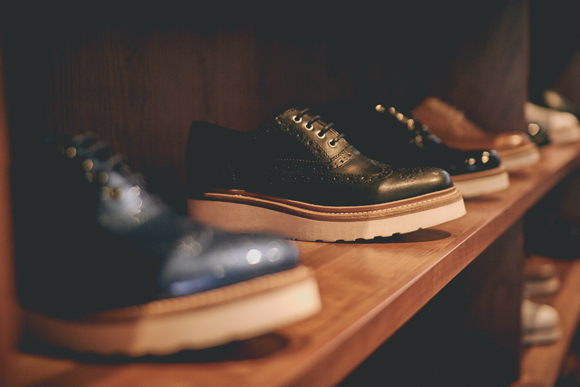
Rugs and armchairs keep the place from feeling too much like a museum to men’s footwear. On one side of the store you’ll find a wall of it, while on the other there’s a wall of Instagram photos made into a wallpaper. The venue on Lambs Conduit is the largest store from Grenson yet and offers both the men’s, women’s and G:Lab collections all under 1 roof. Grenson offers customers the opportunity to place personal bespoke orders twice a year (at the beginning of each season) over a private in store breakfast.
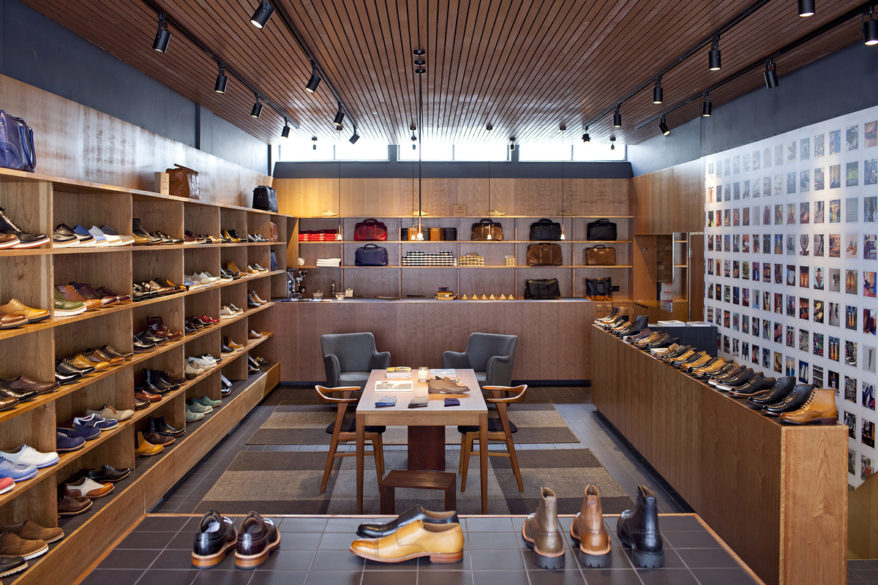
Ultimately, Lambs Conduit possesses an admirable, organic harmony between its many unique boutiques, restaurants and cafes – though diverse, they complement one another at the meeting point of old and new aesthetic and design. There is a strong sense of community in Lambs Conduit which arises from an older generation of shop owners who make space for change and a respectful acknowledgement of the heritage from new establishments, whose smart design, aesthetic and consciousness of the area collide to produce a street that feels familiar upon first visit.
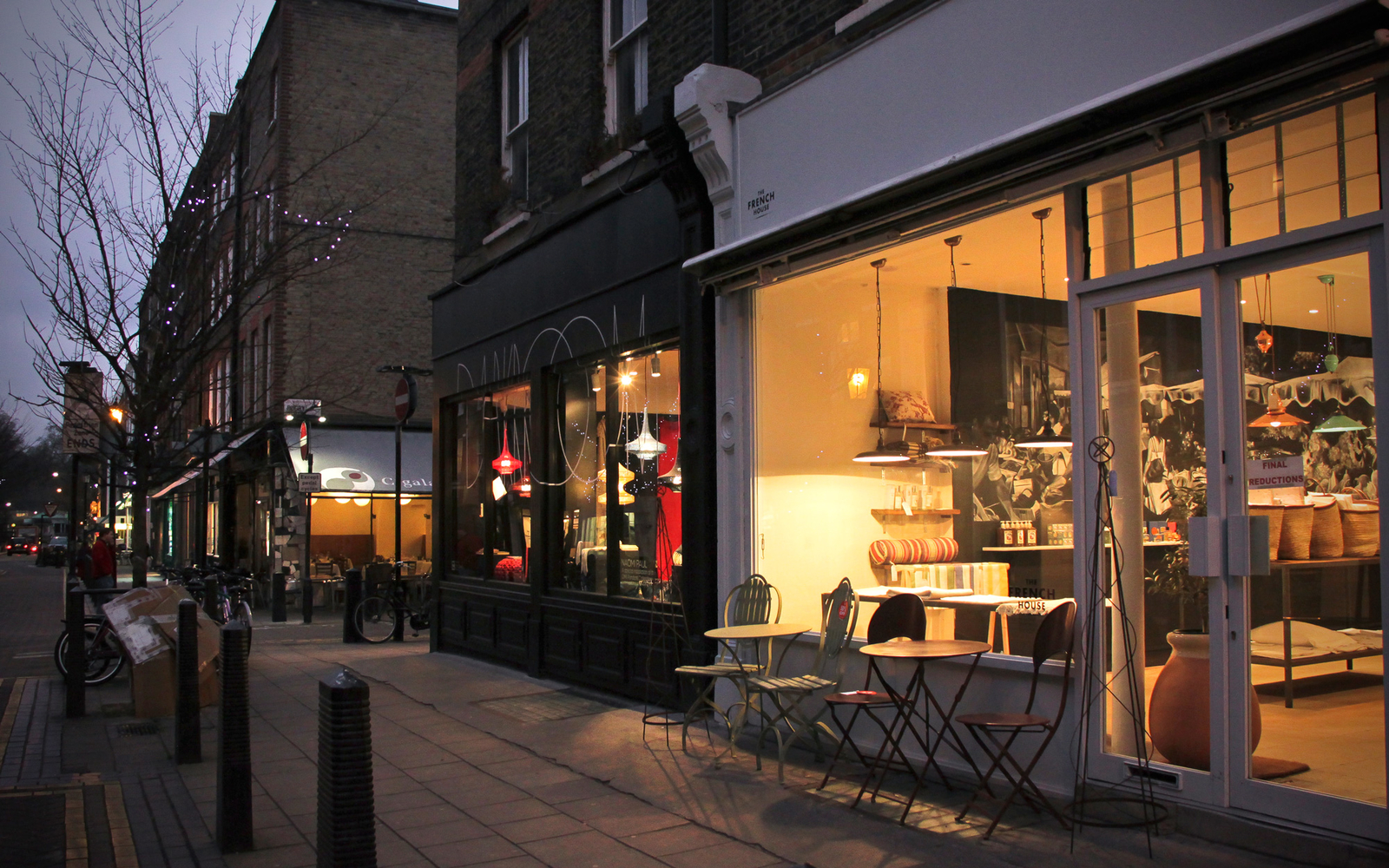
For both the discerning, fashion-conscious Generation-Y urbanist who’s grown weary of the Prets, the Primarks and the other mega-corporate clutter of the 21st century city, and for the nostalgic elder Londoner, who wishes to find a bit of peace and reminisce upon older times, Lambs Conduit is a haven that speaks to both past and future.